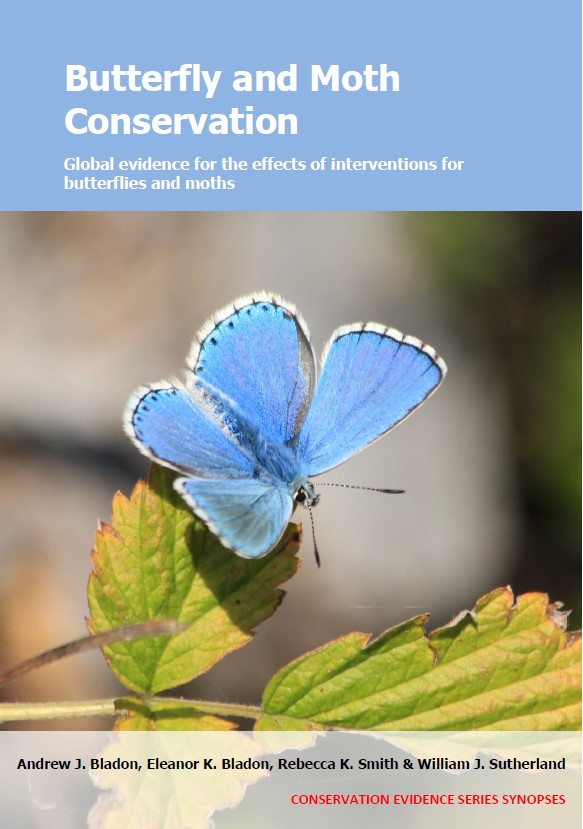Create beetle banks
-
Overall effectiveness category Awaiting assessment
-
Number of studies: 4
View assessment score
Hide assessment score
How is the evidence assessed?
-
Effectiveness
not assessed -
Certainty
not assessed -
Harms
not assessed
Study locations
Supporting evidence from individual studies
A replicated, paired, site comparison study in 1999 on five farms in the UK (Thomas et al. 2000) found that beetle banks had a similar abundance of butterfly and moth caterpillars to field margins, but that the abundance and species richness of adult butterflies was lower on beetle banks than in hedgerows. The abundance of butterfly and moth caterpillars did not differ significantly between beetle banks (0.4 individuals/sweep) and field margins (0.5 individuals/sweep). However, both the abundance (1–2 individuals/transect) and species richness (0.5–2 species/transect) of adult butterflies were lower in beetle banks than along hedgerows (abundance: 2–6 individuals/transect; richness: 1–3 species/transect). A total of 12 species from three families were recorded on beetle banks, compared to 19 species from four families along hedgerows. In summer 1999, butterfly and moth caterpillars were sampled by sweep-netting on 22 beetle banks of different ages and 22 permanently established field margins across five farms. Adult butterflies were recorded on 82 transects along beetle banks and hedgerows in June, July and August 1999.
Study and other actions testedA replicated, site comparison study in 2000 on a lowland arable farm in Leicestershire, UK (Moreby 2002, same experimental set-up as Moreby & Southway 2002) found that beetle banks contained similar densities of caterpillars to other field edge habitats. There was no difference in caterpillar densities between habitat types (data not presented). Ten edge habitats (beetle banks, first-year wild bird cover, second-year wild bird cover, non-rotational set-aside, brood cover, hedge bottoms, sheep-grazed pasture edges, ungrazed pasture edges, grass/wire fence lines and winter wheat headlands) were included in the study (sample size not given). Caterpillars were sampled with a vacuum suction sampler in June 2000 (no further details provided).
Study and other actions testedA replicated, site comparison study in 1995–1999 on an arable farm in Leicestershire, UK (Moreby & Southway 2002, same experimental set-up as Moreby 2002) found that the abundance of moth and butterfly caterpillars was similar in non-crop strips (grass beetle banks or wild bird cover) and crop fields in most years. The abundance of moth and butterfly caterpillars was similar in non-crop strips (0–1 individuals/sample) and crop fields (0–1 individuals/sample) in four out of five years. In 1996, the abundance of caterpillars was lower in non-crop strips (0.4 individuals/sample) than in crop fields (0–2.2 individuals/sample). However, a composite group of key ‘chick food insects’ (including caterpillars) had higher densities in non-crop strips (65 individuals/sample) than in crop fields (2–10 individuals/sample) in all years. Grass beetle banks (1 m wide) were sown onto a raised bank along edges or across the centre of fields. Wild bird cover was sown as 2–5-m-wide strips along field boundaries and re-sown every few years with a cereal or kale-based Brassica spp. mixture. Caterpillars were sampled each year in the centre of 5–11 grass beetle banks or wild bird cover strips, and 3-m into 3–4 pasture, 8–12 wheat, 6–8 barley, 3–6 oilseed rape and 4 field bean fields. Two samples of 0.5 m² were taken in each habitat using a D-Vac suction sampler in June 1995–1999.
Study and other actions testedA replicated, paired, site comparison study in 2008 on 30 farms in central Scotland, UK (Fuentes-Montemayor et al. 2011) found that beetle banks and grass field margins managed under agri-environment schemes (AES) had a higher abundance and species richness of micro-moths, but not macro-moths than conventionally-managed field margins. In AES beetle banks and field margins, both the abundance (57 individuals) and species richness (24 species) of micro-moths were higher than in conventional field margins (abundance: 17 individuals; richness: 8 species). However, the abundance (294 individuals) and species richness (34 species) of all macro-moths, and the abundance (24 individuals) and species richness (6 species) of declining macro-moths on AES banks and margins were not significantly different from conventional margins (all macro-moths: 207 individuals, 38 species; declining macro-moths: 32 individuals, 10 species). In 2004, fifteen farms enrolled in AES, and were paired with 15 similar but conventionally-managed farms, <8 km away. On AES farms, 1.5–6-m-wide beetle banks or field margins were sown with grass mixes, and managed with restrictions on grazing and fertilizer and pesticide use. Field margins on conventional farms had no management restrictions. From June–September 2008, moths were collected for four hours, on one night/farm, using a 6 W heath light trap located next to one bank or margin on each farm. Paired farms were surveyed on the same night.
Study and other actions tested
Where has this evidence come from?
List of journals searched by synopsis
All the journals searched for all synopses
This Action forms part of the Action Synopsis:
Butterfly and Moth Conservation
Butterfly and Moth Conservation - Published 2023
Butterfly and Moth Synopsis





)_2023.JPG)














